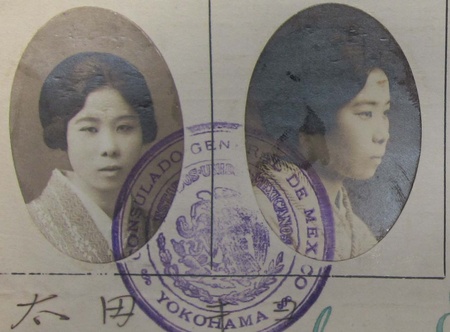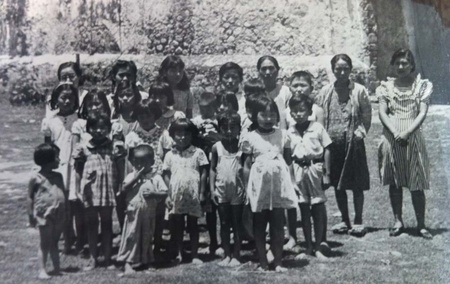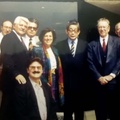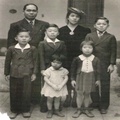María Elena Ota Mishima was the most important scholar of Japanese immigration in Mexico. His book “ Seven Japanese migrations in Mexico. 1890-1978 ” 1 revealed the long march that Japanese immigrants had to travel to arrive and settle in that country.
The study also made a methodological contribution to migration studies by classifying immigrants according to the way in which they entered Mexico, whether as settlers, under contract, freely, professionals or as guests of their countrymen who were already there. in Mexico. Ota's study also showed the various prefectures from which the immigrants came and the places of destination in Mexico, as well as the various branches of the economy to which the immigrants entered, such as agriculture, mining, fishing or trade.
As a whole, Ota's book revealed the importance that immigrants and their families had in the history of Mexico. The validity of Siete Migraciones , published in 1982, is proven through the new investigations that students and researchers carry out today. There is no thesis or in-depth research work on the Japanese community that is not supported by the proposal and information that María Elena has left us.
As a professor at El Colegio de México and a scholar of the emigration of Japanese and Asians to Mexico, Ota was widely recognized. That is why it was part of the important International Nikkei Research Project (INRP) throughout the continent that was sponsored by the Japanese American National Museum in the city of Los Angeles, California in 1998.
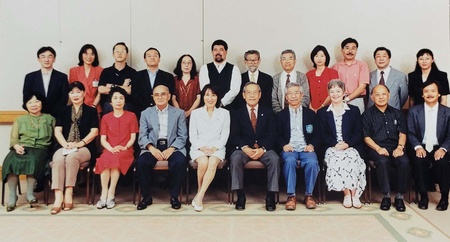
Despite the importance of her academic career, María Elena's personal and family career is unknown. It was part of the history that she herself documented in detail about immigrants.
His father, Kizo Ota, arrived in Mexico in 1913, in the midst of the revolution, when President Francisco I. Madero was assassinated and the armed struggle was unleashed throughout the country against the usurper Victoriano Huerta. The immigrant came from one of the poorest prefectures in Japan, Fukuoka, where most immigrants to Mexico came from.
Kizo worked as a farmer in Mexicali and María Elena's mother, Kiyo Mishima, arrived in that city at the call of her father in 1928. Three years later, María Elena was born in that city, whom her parents called in Japanese Iko. A few years later, the Ota family moved to El Rosario, Sinaloa, where Kizo acquired an agricultural property. In this city María Elena began her primary education studies.
When the war between Japan and the United States began in December 1941, the North American government asked the Mexican government to immediately relocate all the Japanese living on the border. The immigrants and their families, with the little they could carry, began to move to the cities of Mexico and Guadalajara in January 1942.

According to the North American military, immigrants and their descendants represented a “danger” to the security of the United States. Rumors spread in California of attacks and of an alleged invasion by the Japanese army in which the immigrants would be part.
Japanese communities across the continent had formed families so their descendants were citizens of the receiving countries. In the case of the United States, of the 120 thousand people who were taken to ten concentration camps, two thirds were Americans by birth, so they were fully integrated into the American way of life.
In Mexico, immigrants and their families were part of the economy and society of the towns where they lived, so it was its inhabitants who opposed the mandatory transfer and who sent letters to the Mexican government so that the immigrants would not concentrate in the center of the republic.
The hysteria and anti-Japanese hatred that grew in the United States spread throughout the continent, so the Japanese and their families were stigmatized as “enemies” of the countries where they lived. The war between the United States and Japan acquired a strong racist and persecutory content on the continent against communities of Japanese origin that had been established in various American countries for more than four decades.
María Elena Ota and her brother, who were Mexican citizens by birth, moved with their parents to Mexico City in August 1942. They lived in that city for only a few months due to the impossibility of getting a job and renting a home.
Faced with this situation, the Ota family and hundreds of other concentrates moved to an old hacienda located in Temixco, near the city of Cuernavaca. The property was acquired with funds from some Japanese and by the Kyoei-kai (Mutual Aid Committee), an organization created by the immigrants themselves, with the purpose of giving the concentrated people a place to live and work.
The Ota family stayed only a few months on the Temixco ranch because at the beginning of 1943, Kizo Ota found work in nearby places as a rice-producing farmer. In those years María Elena began her secondary school studies.
At the end of the war in 1945, the authorities allowed Japanese communities to move without any restrictions. The Ota family moved to Mexico City where María Elena finished her high school education in 1949 with the highest grades. The family's economic situation was not very buoyant, so María Elena had to work and wait until better times to enter the University.
At the end of the 1950s, María Elena entered the Faculty of Philosophy and Letters of the National University in the specialty of History where she graduated with honors. His performance allowed him to later enter the master's degree at that same Faculty.
In 1963, just when he finished his graduate studies, El Colegio de México, through the recommendation of Don Daniel Cosío Villegas, asked the Rockefeller Foundation to grant Ota a scholarship to carry out specialization studies in Japanese history and culture at the University of Tokyo. The objective of El Colegio was to train a group of teachers to create a Department in Oriental Studies and promote a master's program in that geographical area.
Upon her return from Japan in 1965, Ota joined the Department of Oriental Studies as a professor under the direction of Graciela de la Lama. As a professor at the Department, which would later become the Center for Asian and African Studies, Ota was in charge of teaching Japanese history, language and culture. To facilitate the study of the Japanese language, María Elena prepared the first manuals and at the same time began to study in depth the history of Japanese migration to Mexico.
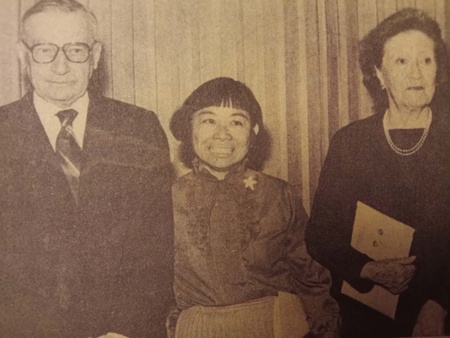
To carry out the study on Japanese immigrants, a topic on which she earned a Doctorate degree from the Faculty of Philosophy, Ota not only consulted thousands of files on migrants in the archives of the Registry of Foreigners and Foreign Relations, but also traveled throughout the country. the country to directly interview the Japanese themselves.
María Elena Ota was part of the migration itself, persecuted and in a hostile environment, she managed not only to overcome the difficulties that the concentration generated during and after the war but also to train as a specialist in history at the National University and as an academic at El Colegio de México. areas reserved mainly for men. The close contact he had with immigrants earned him the recognition and admiration of the community until his death in 2000.
Note:
1. The book is out of print but can be consulted online at the El Colegio de México Library .
© 2023 Sergio Hernández Galindo


